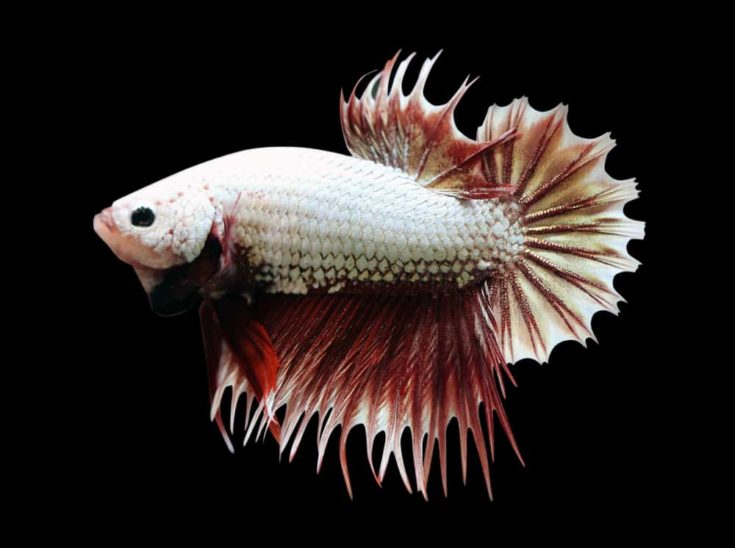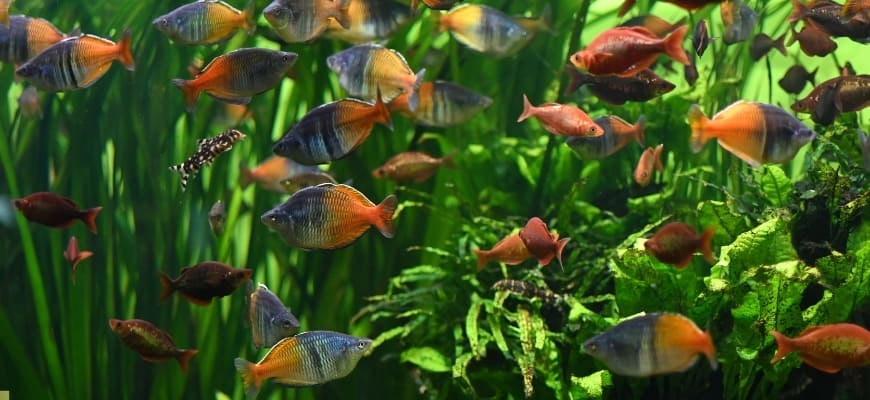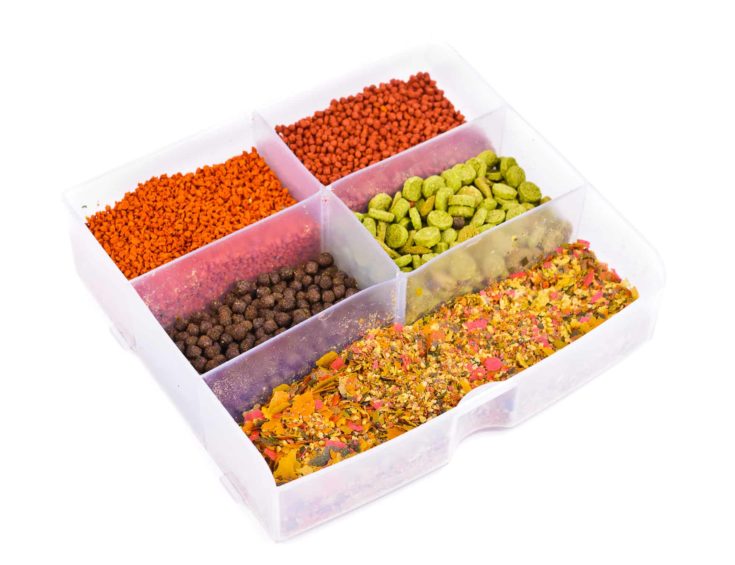Dropsy is a very serious condition that affects many species of popular pet fish, including goldfish and bettas.
Depending on the cause of the condition, dropsy in betta fish can be treated and sometimes cured. So, what causes Dropsy? Can Epsom salt cure Dropsy? And is Dropsy the same thing as bloat?
Read this guide to find out!
What Is Dropsy?
Dropsy is an outdated medical term that is more correctly termed edema or ascites. The word, Dropsy is derived from the old English word dropesie and from the Old French word hydrops, meaning water.
The condition causes the soft tissues of the abdomen to swell, generally because of an accumulation of bodily fluids and or water. Although no longer used in human medical terms, Dropsy is still used to describe a condition affecting fish. Fish with Dropsy have massively swollen bellies that appear to drop down, hence the condition’s popular common name. Dropsy is sometimes also known as bloat.
Stress-Related?
The term Dropsy describes a cluster of symptoms that are usually caused by a bacterial infection. The bacteria that are commonly responsible for Dropsy are found in most aquariums, but they only attack fish that have been weakened by stress, injury, or some other disease. So, if all the fish in the tank are stressed out, it’s not uncommon for the whole community to develop Dropsy.
Dropsy is pretty easy to recognize and presents with some of all of the following signs and symptoms:
Signs And Symptoms Of Dropsy In Betta Fish
- Hugely distended belly
- Pinecone-like appearance
- Bulging eyes
- Pale gills
- Pale, stringy feces
- Red, swollen anus
- Ulcers along the lateral line
- A curved spine
- Clamped fins
- Reddening of the fins or skin
- Lethargy
- No appetite
- Swimming or hanging near the surface of the water
If the infection is not treated promptly, the disease will progress quickly. Skin lesions will appear on the fish’s body, typically along the lateral line, the bell becomes massively distended as it fills with fluid, the fish’s internal organs are damaged, and death usually follows.
Unfortunately, the prognosis for Dropsy is not hopeful, and the death rate in victims is very high. In fact, unless you spot the condition in its very early stages, Dropsy is extremely difficult to treat successfully.
How To Recognize Early Signs Of Dropsy

What makes Dropsy so difficult to diagnose is the fact that the symptoms vary so widely.
Some fish present with the characteristic swollen belly, whereas others develop skin ulcers, and some show very few symptoms at all. However, in most cases, the symptoms develop as the disease progresses.
The betta’s internal organs will be affected, specifically the kidneys and liver. The fish becomes anemic, so its gills become pale. The fish’s body cavity fills with bodily fluids, causing the vital organs to be pushed aside and distorting the spine. The betta’s scales stick out from his body so that he resembles a pine cone. Once the disease reaches that stage, the infection is very severe, and the fish will most likely die.
What Causes Dropsy In Betta Fish?
It’s usually the common Aeromonas bacteria that are the culprit in cases of Dropsy. Aeromonas is present in most aquariums. This species of bacteria is known as gram-negative since they don’t present with a specific stain that’s used to identify bacteria through the Gram Stain method.
These bacteria only attack fish whose immune system is compromised by stressful conditions in the aquarium. There are several factors that cause stress in aquarium fish, including:
- Harmful levels of ammonia or nitrite in the water
- Poor water quality
- Sudden fluctuations in water temperature
- Stress resulting from transportation
- Incorrect or poor diet
- Aggressive tank mates
- Injury or other diseases
Usually, short-term exposure to stress doesn’t cause problems in most fish species, especially the hardier ones. Most times, the fish must be stressed for a long period of time, or there must be multiple stress factors occurring simultaneously.
How To Treat Dropsy In Betta Fish
As previously stated, Dropsy is extremely difficult to treat and almost impossible to cure, especially when combined with Popeye. In fact, many hobbyists prefer to euthanize their betta to stop the condition from spreading to other healthy livestock.
That being said, if you spot the infection early and isolate the betta for treatment, you can sometimes save him. Essentially, you need to rectify the underlying cause of the problem and provide TLC and support to the sick fish.
- Transfer the sick betta to a hospital tank.
- Add one teaspoon of Epsom salt per gallon of water to the hospital tank.
- Offer the fish only high-quality, fresh foods.
- Treat the bacterial infection with antibiotic medication either in the water or in the food if the fish is still eating.
- Test the hospital tank water every day to make sure that the parameters are suitable for the betta.
The low levels of Epsom salt in the water can help the fish to get rid of the excess fluids and water that are causing the swelling by correcting the fish’s osmotic balance.
Tank Management
It’s essential that you remove any fish that are affected by Dropsy to a separate tank to reduce the risk of your other livestock being infected.
Meanwhile, perform a 30% water change on your main tank, and continue to monitor your other fish closely for any ominous symptoms of disease or infection. Throughout the fish’s treatment, keep the hospital tank scrupulously clean.
Antibiotic Treatment
As well as the Epsom salt dip treatment, you should start treating your fish with a broad-spectrum antibiotic that’s specifically designed to treat gram-negative bacteria, such as Maracyn-Two.
Treat the fish for ten days to ensure that the infection is completely dealt with. However, always follow the manufacturer’s directions for the correct dosage and duration of treatment.
How To Prevent Dropsy In Betta Fish
As is the case with all fish diseases, it’s much better to prevent problems from occurring in the first place. Most of the stress factors that can lead to bacterial infections are totally preventable.
Water Conditions
Test your betta’s aquarium water every week to make sure that the tank is clean and healthy for your fishy friend.
The water temperature should be 75° to 81°F. Also, the ambient temperature in the room that your betta’s tank is in must be the same or very close to that of the water. That’s essential to protect the betta’s delicate labyrinth organ.
The water pH should be 6.5 to 7.5, with a hardness of 3 to 4 dGH.
Levels of ammonia and nitrite should always be zero, and nitrates must be no higher than 20ppm, preferably lower.
Tank Cleanliness
Dirty tank water is a prime cause of stress in all fish.
Your betta’s tank should have an efficient filtration system that’s suitable for the size of the tank. You must rinse the filter media in old tank water every month or so to remove any sludge that would otherwise clog the media and prevent the water from circulating through the media properly.
You also need to carry out partial water changes every week to keep the water fresh and remove excess nitrates. Use an aquarium vacuum to remove accumulations of fish waste, decaying plant matter, uneaten food, and general detritus that would otherwise rot and contaminate the water.
Don’t Overcrowd Your Tank!

Overcrowding is very stressful for fish, especially territorial species such as bettas that need their own space. Also, if you have too many fish in the tank, the water quality will most likely suffer because of the amount of waste that will be produced by the fish.
Finally, if there are too many fish in the tank, competition for food can be fierce, leading to confrontations.
Overfeeding
If you feed your fish too much, you risk stressing them out and causing conditions such as constipation and bloat.
Betta fish have tiny stomachs that are only the size of the fish’s eye, so you can see that it’s very easy to feed them too much. Offer your betta only what he will eat in a few minutes and remove uneaten food from the tank so that it doesn’t start to decay.
It’s also recommended that you starve your betta one day every week to allow his digestive system to process all the food that’s in it. That can help to prevent constipation and bloating. On the other six days of the week, feed your betta fish twice a day.
Feed A High-Quality, Nutritious Diet

Never compromise on the quality of the food that you offer your betta in an attempt to save money. Choose high-quality betta pellets, frozen meaty protein, freeze-dried bloodworms, and live foods if you can find a reputable supplier.
In Conclusion
I hope you found our guide to Dropsy in betta fish helpful. If you enjoyed the article, please share it.
Dropsy is a serious condition that’s caused by a common bacteria that is present in most fish tanks. Fish that are placed in ongoing stressful conditions have a weakened immune system, which leaves them open to attack by the bacteria. Prevent Dropsy by keeping your betta’s tank clean, monitoring water parameters, and feeding your pet correctly.
Did you successfully treat your sick betta fish? Tell us what happened in the comments box below!